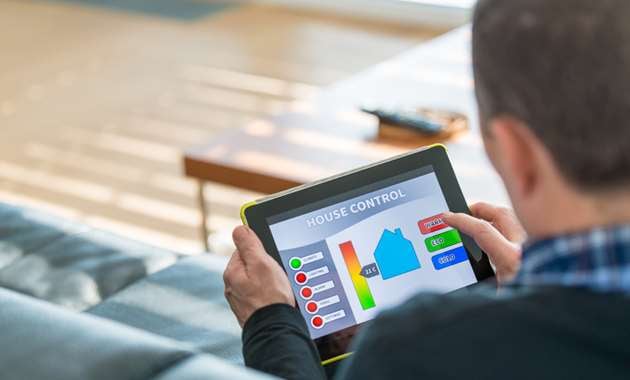Your Cart is Empty
Enjoy 10% off sitewide and up to 25% off our Holiday Collection. Discounts will be applied at checkout. Click here to shop our End of Year Sale!
Enjoy 10% off sitewide and up to 25% off our Holiday Collection. Discounts will be applied at checkout. Click here to shop our End of Year Sale!

Have you been thinking about converting your home into a smart home? The idea of automating so many of the mundane tasks of daily life (e.g., adjusting the thermostat, locking the doors at night, etc.) is definitely appealing, especially when you can do it in such a cool, James Bond-esque manner. If you’re ready to boost your home’s IQ, be sure to take the following 4 steps into consideration first, so that your transition into home automation can be as smooth as possible.
We’re living in a wireless world, and with the seemingly limitless connectivity options available to us, it can be easy to forget that the performance of your smart home devices will depend upon the quality of the signal coming from your Wi-Fi router. This means that you really have to take some time to think about where you want your router to be positioned in your home for the best signal transmission. For example, if your router is currently in your basement or in some far-flung corner of your home, those radio waves are going to have a hard time traveling through all of the different structural materials of your home (e.g., concrete basement walls, etc.) to provide a decent signal. As much as is possible, try to position your Wi-Fi router in a centrally located area of the home, and on the ground floor, for optimal signal transmission.
While there are dozens of “plug-and-play” smart home devices that can be installed with very little hassle, other devices such as thermostats and dimmer switches will need to be hard-wired into place. This is going to require some level of skill and proficiency in the field of electrical wiring, so if you don’t have that type of background, it’s probably best to leave it in the hands of a professional.
There are quite a few smart home devices that are battery operated, but the majority will require some type of connection to a power outlet. Keep this in mind in terms of where you want to install your smart home devices, because if you’re not careful, you could end up with a Grade-A mess on your hands in terms of power cord management. If you’re upgrading to smart home devices as part of a home renovation, consider installing power outlets in obscure but very useful places, such as inside of kitchen cabinets and bookshelves, under windows (where curtains can conceal their presence), or in strategic areas on the floor where possible. You should also consider upgrading some of your power outlets to include USB ports as well. By taking these steps, you will be able to at least minimize the amount of cords, splitters, wires, and other unsightly-but-necessary elements of your smart home setup.
So you’ve got a smart thermostat from Company X, a smart home security camera from Company Y and a smart water sensor from Company Z. While these products might be awesome in and of themselves, they can easily become a hassle when you try to manage all of them together. After all, each device will come with its own app and communications protocol, which means logging into three different interfaces to take care of business. This can easily become a tiring, headache-inducing drudgery.
Why not have all of your smart home devices connected into one integrated system, so that you can manage their settings and functionality from one centralized control panel? That’s exactly what the BeHome247 home automation system is all about – you can control all of your smart home devices with the BeHome247 online interface, so that whether you need to adjust the angle on your security camera, set the thermostat a few degrees lower or lock the keyless lock on your front door, you can do it all from one app with only a few taps of the screen (or clicks of the mouse). And since BeHome247 utilizes the Z-Wave protocol, you will have plenty of compatible smart home devices to choose from to integrate into your home automation system.
While converting your home into a smart home is exciting, it also requires some careful planning and forethought. Keep the above steps in mind so that you can install a smart home system that will save you lots of time and energy down the line!
© 2024 GoKeyless. All rights reserved. Privacy Policy. Terms of Use. Powered by Brandography.